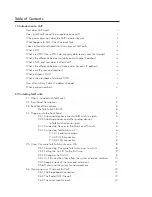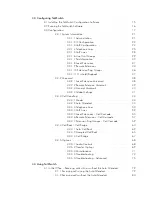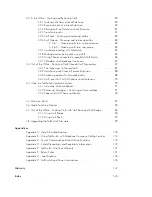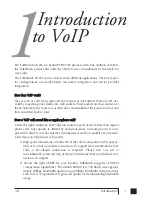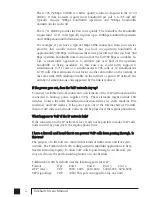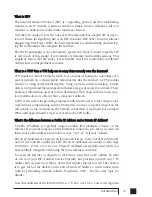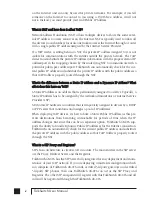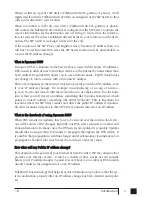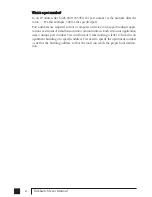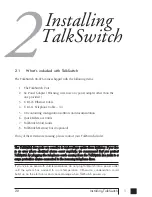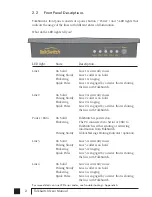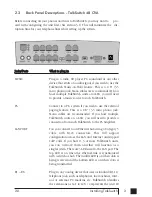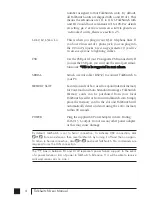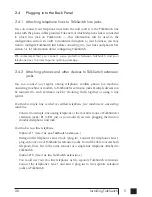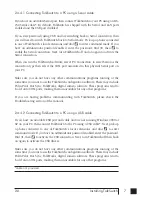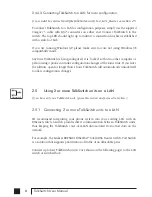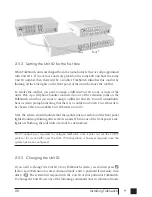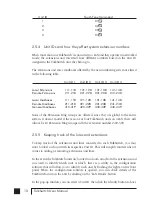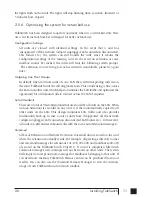
The G.726 (32Kbps) CODEC is a better quality solution compared to the G.729
CODEC. It does, however, require more bandwidth per call. A G.726 call will
typically require 50Kbps bandwidth upstream and 50Kbps bandwidth
downstream for each call.
The G.711 CODEC provides the best voice quality. The tradeoff is the bandwidth
requirement. G.711 calls typically requires up to 100Kbps bandwidth upstream
and 100Kbps bandwidth downstream.
For example, if you have a typical 1Mbps ADSL connection from your service
provider, this usually means that you have an upstream bandwidth of
approximately 380 Kbps. Just because the service provider says that you have 380
Kbps upstream bandwidth does not mean that the full 380 Kbps is available. In
fact, a conservative approach is to estimate just over half of the upstream
bandwidth as being available. In this case you could safely support 2
simultaneous G.711 calls or 4 simultaneous G.726 calls or 10 simultaneous
G.729 calls. These estimates do not factor in other data traffic on the network at
the same time. With additional traffic on the Internet or private IP network, the
number of simultaneous calls supported by the link is reduced.
IIff tth
hee p
po
ow
weerr g
go
oeess o
ou
utt,, d
do
oeess tth
hee V
Vo
oIIP
P n
neettw
wo
orrk
k sstta
ayy u
up
p??
To ensure a reliable network connection, all elements of the VoIP network should be
connected to back-up power supplies (UPS). These elements might include LAN
switches, routers, firewalls, broadband connection devices (ie. cable modems, DSL
modems), and VoIP devices. If the power goes out at the Internet Service Provider,
then no VoIP calls can be made. Calls can still be placed over the regular phone lines.
W
Wh
ha
att h
ha
ap
pp
peen
nss tto
o V
Vo
oIIP
P iiff tth
hee IIP
P n
neettw
wo
orrk
k ffa
aiillss??
If the connection to the IP network is lost, it will not be possible to make VoIP calls.
Calls can still be placed over the regular phone lines.
II h
ha
avvee a
a ffiirreew
wa
allll a
an
nd
d h
heea
arrd
d tth
ha
att iitt cca
an
n p
prreevveen
ntt V
Vo
oIIP
P cca
allllss ffrro
om
m p
pa
assssiin
ng
g tth
hrro
ou
ug
gh
h.. IIss
tth
hiiss ttrru
uee??
The purpose of a firewall is to control what kinds of traffic enter and leave your
network. The TalkSwitch 48-CVA is designed with embedded applications to help
traverse firewalls properly. To allow VoIP calls to pass through your firewall, you
may need to use the port forwarding feature on your firewall.
TalkSwitch 48-CVA by default uses the following ports for VoIP:
Format
Type
Unit 1
Unit 2
Unit 3
Unit 4
RTP (voice):
UDP
6000 - 6006 6010-6016 6020-6026 6030-6036
SIP (signaling):
UDP
5060 (This port is mapped to only one unit)
ii
TalkSwitch User Manual
TS manual 11th ED_CVA_v11_CD_Release.qxd 7/13/2004 3:33 PM Page ii
Summary of Contents for TALKSWITCH 48-CVA
Page 1: ...Installation and User Guide DESKTOP PHONE SYSTEM TalkSwitch 48 CVA v3 10...
Page 109: ...101 4 0 Using TalkSwitch...
Page 111: ......
Page 145: ......



